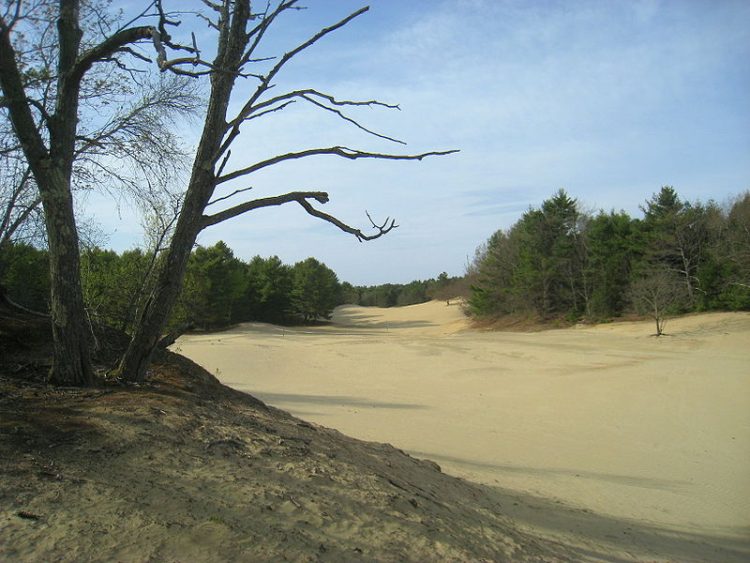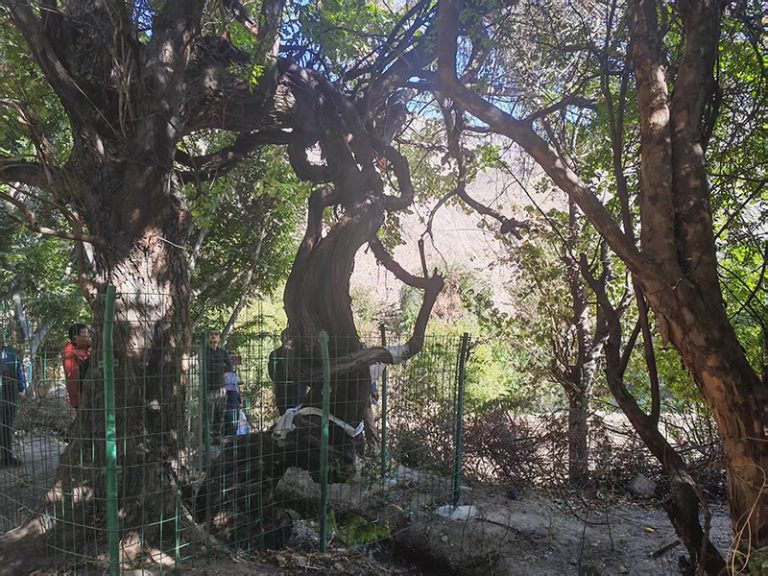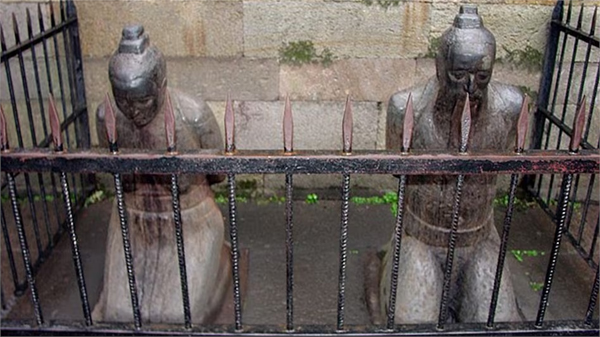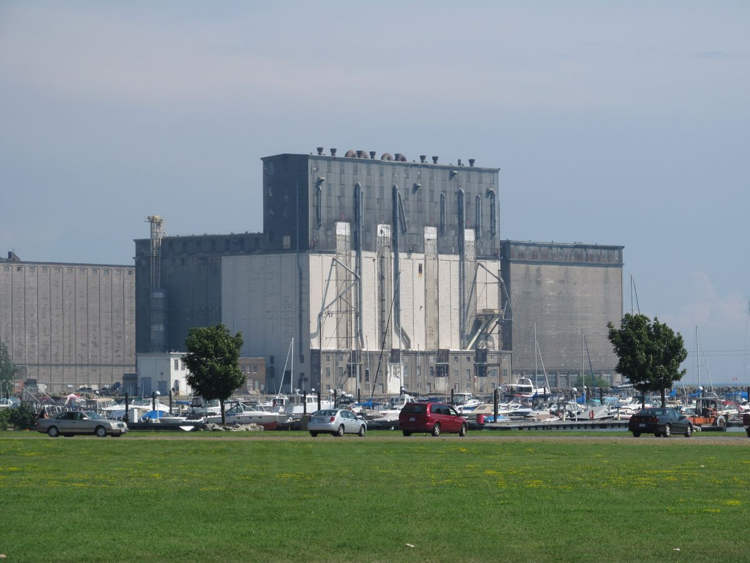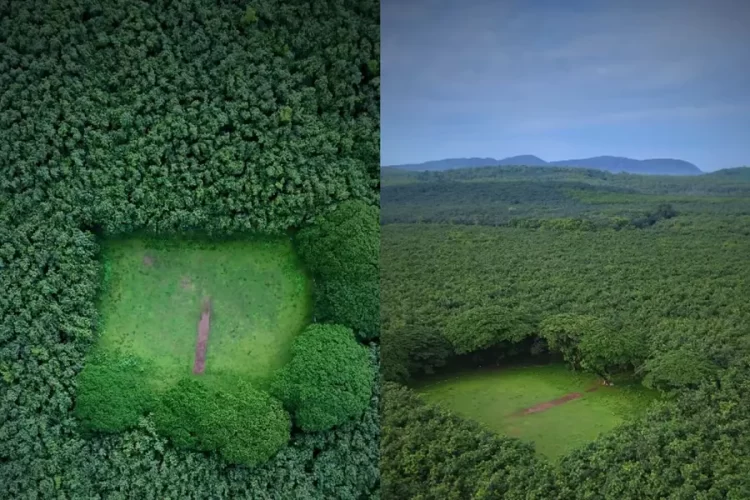The Desert of Maine, a 40-something-acre patch of sand and silt near the town of Freeport, is a geological oddity, natural wonder, and a warning of what irresponsible land use can create.
The “most famous natural phenomenon in Maine” is actually the result of poor land management over several generations. Although not technically a desert in its own right – the state of Maine gets way too much rain for it to qualify as such – the rolling dunes of sand covering the over 40 acres of land certainly look the part. The sand and silt have been there for at least tens of thousands of years, ever since the glaciers covering Maine, ground rocks into pebbles and pebbles into sand as they receded during the last ice age. But it was human activity that brought it back to the surface over 100 years ago.
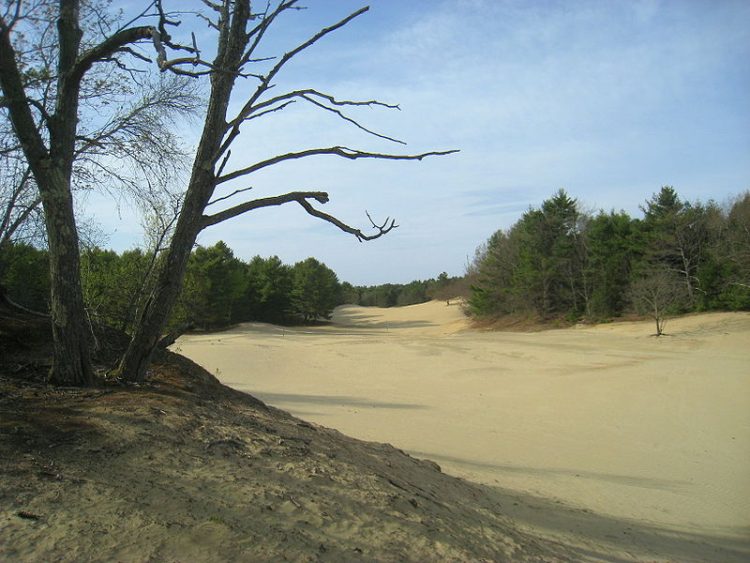
Photo: Public domain
The story of the Desert of Maine dates back to 1797, when settler William Tuttle bought a 300-acre plot of land next to the town of Freeport. He used the fertile land to build a produce farm for his family and also began raising cattle. Tuttle’s descendants diversified the family business, bringing in sheep, and selling their wool to textile mills.
The Tuttles didn’t rotate their crops properly, thus depleting the soil of its nutrients, and the grazing cattle and sheep pulled up the roots of plants holding the top layer of soil together. As things got progressively worse, the Tuttles one day noticed a small patch of sand, about the size of a dinner plate, on their land. Little did they know that this was the beginning of the end of their household.
Despite trying to fight the expansion of that little patch of sand, it kept growing, and before long, it swallowed their pasture and all the structures they had built. in the end, they had no choice but to abandon the family home and seek their fortune elsewhere.
The capitulation of the Tuttle family was only the beginning for the Desert of Maine. In 1919, a man by the name of Henry Goldrup bought the farm for $300 and in a few years’ time opened it to the public as a unique tourist attraction.
According to Culture Trip, all attempts to fight against the desert have proven futile, and the spring house built there in 1935 now sits beneath eight feet (2.4 meters) of sand. Some pine trees that managed to adapt to the area have only the tops exposed, as the rest of their trunks lie buried under 50 feet (15.2 meters) of sand and silt.
The Desert of Maine is one of the main tourist attractions of the state, but it’s also a stark warning of what can happen if the land is mismanaged. Overgrazing and poor crop rotation are serious issues that, along with climate change, threaten to accelerate the desertification of fertile areas.

